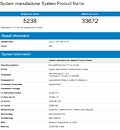Tuesday, July 25th 2017

Intel Core i9-7960X 16-core/32-thread Processor Detailed, Benchmarked
Intel is preparing to tackle AMD's first Ryzen Threadripper parts with two Core "Skylake-X" HEDT socket LGA2066 processor launches in quick succession, over Q3-2017. The first one to come out will be the 12-core/24-thread Core i9-7920X; which will be closely followed by the 16-core/32-thread Core i9-7960X. The company will ultimately end 2017 with the 18-core/36-thread Core i9-7980XE. The i9-7920X, detailed in our older article, could either command a $200 premium over the $999 10-core/20-thread i9-7900X; or displace it to a slightly lower price-point (say, $800). The i9-7960X, however, could retain a premium price-point owing to performance leadership over the Ryzen Threadripper 1950X, if early benchmarks are to be believed.
The Core i9-7960X is endowed with 16 cores, HyperThreading enabling 32 threads, 1 MB of L2 cache per core, and 22 MB of shared L3 cache. It features the chip's full 44-lane PCI-Express gen 3.0 root complex, and a quad-channel DDR4 memory interface. The chip is expected to be clocked even lower than its 12-core sibling, with a nominal clock of a mere 2.50 GHz, and a yet unknown max Turbo Boost frequency. Put through Geekbench 4.1.0, the chip scored 33,672 points in the multi-threaded test, which is higher than the 27,000-ish scores we've been hearing of for the Threadripper 1950X; but a single-thread score of 5,238, which pales in comparison to that of the i7-7740X, due to the lower clock speeds, and a slightly older micro-architecture.
Source:
Geekbench Database
The Core i9-7960X is endowed with 16 cores, HyperThreading enabling 32 threads, 1 MB of L2 cache per core, and 22 MB of shared L3 cache. It features the chip's full 44-lane PCI-Express gen 3.0 root complex, and a quad-channel DDR4 memory interface. The chip is expected to be clocked even lower than its 12-core sibling, with a nominal clock of a mere 2.50 GHz, and a yet unknown max Turbo Boost frequency. Put through Geekbench 4.1.0, the chip scored 33,672 points in the multi-threaded test, which is higher than the 27,000-ish scores we've been hearing of for the Threadripper 1950X; but a single-thread score of 5,238, which pales in comparison to that of the i7-7740X, due to the lower clock speeds, and a slightly older micro-architecture.


26 Comments on Intel Core i9-7960X 16-core/32-thread Processor Detailed, Benchmarked
Unless it's powered by fairy dust, I'm buying a 1950x anyway, however, since a 2.5ghz base clock, mediocre TIM and 1700 dollar price tag aren't very appealing and I refuse to delid anything I'm still actively using!
At present time it's not the brightest idea to buy any Intel CPU, except Pentium G4560 or G4600 which are excellent for their price tag.
Intel's offerings seem to clock higher, thus as long as the TDP is low enough they can leverage that.
My reasoning in short for conclusion.
Intel's lower offerings such as 6,8,10 core will be the good ones there due to clock speed and the 12core + will be a waste it seems due to TDP limited clocks.
AMD just have so much more efficiency up till a certain point (3.7ghz)
For gaming, Core i9 and Threadripper will be totally unnecessary, a waste of money, although some future games will likely use more than 4 cores. So far there's absolutely no point in buying anything more than 4C/8T or, at most, 6C/12T CPU for gaming and it will remain so at least for a couple of years.
The energy consumption is a nice thing but also a total nonsense, because anyone who aims for the upper-middle class or high end CPU shouldn't be concerned about it. It's like someone who has money to buy an BMW M3 starts worrying about high fuel consumption - yeah, right...
What I should have written instead was "With the system pulling more than 400W from the wall"
Better?
- stock/auto ~1.06V = ~200W CPU / 280W+ system( CPU load only )
- 1.15V = ~300W CPU / 380W+ system ( CPU load only )
- 1.20V = ~340W CPU / 420W+ system ( CPU load only )
- full load CPU at 1.2V + single GTX1080Ti = 620W ( CPU+GPU load )
measured with TP-Link Smart Plug
Tdp is close enough to power used...
TDP supposed to be maximum heat generated by CPU in watts ( not CPU power ) but it's seems like it's counted from average VID under typical load. Modern processors don't have one specified voltage so on each setup, heat and wattage can be different. All these power saving features and some other things are affecting what you really get.
Consider:I know what he means, but it's wrong. It obviously doesn't matter, but still.